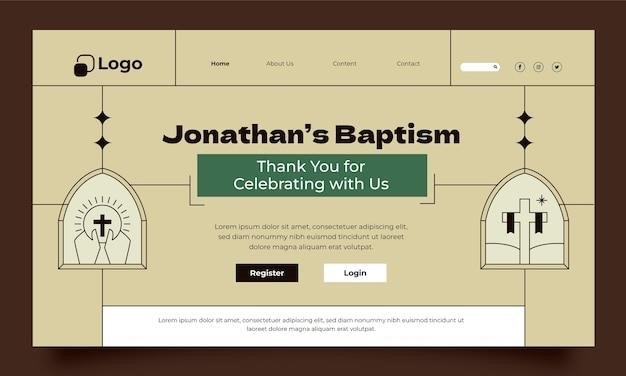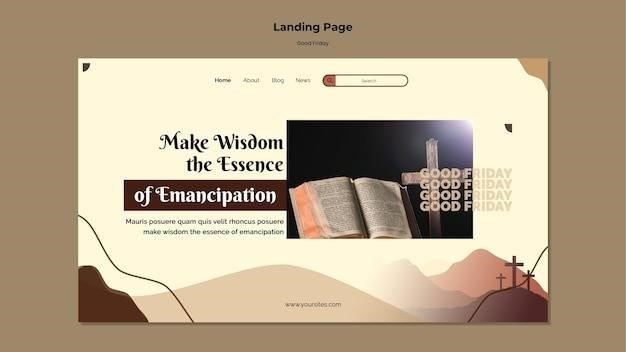The Early Church⁚ From Pentecost to the Fall of Jerusalem
The early church‚ born on Pentecost‚ rapidly expanded despite facing intense persecution. From the apostles’ ministry to the destruction of Jerusalem‚ the nascent faith spread‚ establishing communities across the Roman world. Challenges included internal divisions and external pressures. This period laid the foundation for future growth.
The Apostolic Age and its Challenges
The Apostolic Age‚ spanning from Pentecost to the deaths of the last apostles‚ witnessed the explosive growth of Christianity. Led by figures like Peter and Paul‚ the early church faced numerous challenges. Internal disputes arose over doctrine and practices‚ as evidenced by debates in the Book of Acts and Paul’s epistles. External pressures were even more significant. The Roman Empire viewed Christianity with suspicion‚ leading to sporadic but increasingly severe persecutions. These persecutions‚ though often localized‚ tested the faith of early Christians and shaped the development of church structures and practices. The spread of the gospel was facilitated by missionary journeys across the Roman world. These journeys‚ meticulously documented in the New Testament and other early sources‚ illustrate the determination of the early church to expand its reach despite adversity. The diverse cultural and social backgrounds of early converts also contributed to the rich tapestry of the early church‚ while concurrently introducing new challenges in terms of doctrinal uniformity and practical application of faith.
The Spread of Christianity and Early Persecutions
Despite facing significant opposition‚ Christianity spread rapidly throughout the Roman Empire. Early Christians‚ often facing social ostracism and legal persecution‚ utilized existing Roman infrastructure—roads and trade routes—to disseminate their message. Oral traditions‚ alongside the circulation of letters and eventually the Gospels‚ played a crucial role in this expansion. The appeal of Christianity’s message of salvation and hope resonated with diverse populations‚ including slaves‚ women‚ and the marginalized. However‚ this growth didn’t come without cost. Roman authorities viewed Christianity as a subversive threat‚ leading to intermittent waves of persecution. These persecutions‚ ranging from local harassment to systematic campaigns of violence‚ often resulted in martyrdom for many Christians. Yet‚ paradoxically‚ these persecutions arguably fueled the spread of the faith‚ as the stories of Christian resilience and unwavering commitment attracted new converts. The early church’s organizational structure‚ though decentralized‚ proved resilient in the face of adversity. The network of communities supported each other‚ sharing resources and bolstering morale during challenging times. The writings of early Church Fathers also offer invaluable insights into the challenges and triumphs of this period.
The Rise of the Church in the Roman Empire
From initial persecution‚ Christianity transitioned to become the dominant religion of the Roman Empire. Constantine’s conversion and the Edict of Milan marked a turning point‚ granting religious tolerance and ultimately leading to the establishment of Christianity as the state religion.
The Impact of Constantine and the Edict of Milan
The Roman Emperor Constantine’s conversion to Christianity in the early 4th century CE profoundly altered the religion’s trajectory. His embrace of the faith‚ a pivotal moment in Christian history‚ led to significant changes within the Roman Empire. Prior to this‚ Christians faced intermittent and often brutal persecution. The Edict of Milan‚ issued in 313 CE by Constantine and Licinius‚ officially granted religious tolerance throughout the Roman Empire‚ marking the end of systematic state-sponsored persecution. This pivotal decree allowed Christians to openly practice their faith without fear of reprisal‚ paving the way for the rapid growth and institutionalization of the Church.
The Edict of Milan not only ended persecution but also initiated a period of unprecedented growth and influence for Christianity. Churches were built‚ previously confiscated properties were returned‚ and the faith transitioned from an underground movement to a prominent and increasingly powerful force within the Roman Empire. Constantine’s support extended beyond mere tolerance; he actively promoted Christianity‚ commissioning the construction of magnificent basilicas and contributing to the development of Christian theology and doctrine. His actions transformed the religious landscape of the empire and laid the groundwork for Christianity’s eventual rise to become the dominant religion.
The Development of Church Structure and Doctrine
Following the Edict of Milan‚ the Christian church underwent a period of significant organizational and doctrinal development. No longer an underground movement‚ the church expanded rapidly‚ necessitating the establishment of a more formal structure. Early church governance evolved‚ with bishops emerging as leaders of local congregations‚ eventually forming a hierarchical system with regional metropolitans and patriarchs. This organizational growth mirrored the increasing influence of Christianity within the Roman Empire. The development of church structure was also intertwined with the formulation of Christian doctrine. Early church councils‚ such as the Council of Nicaea in 325 CE‚ addressed crucial theological questions and established orthodox beliefs‚ codifying central tenets of Christian faith and resolving significant doctrinal disputes.
The standardization of Christian doctrine was a crucial process in unifying the diverse Christian communities across the vast Roman Empire. The establishment of creeds and theological frameworks provided a common foundation for belief and practice‚ helping to maintain unity amid burgeoning theological discussions and interpretations of scripture. While this process promoted cohesion‚ it also led to divisions and schisms as different groups interpreted and applied the doctrines in varying ways. The defining of Church structure and doctrine during this period shaped the future course of Christianity‚ establishing frameworks that continue to influence Christian denominations today.

The Middle Ages⁚ Challenges and Transformations
The Middle Ages witnessed profound changes within the Christian Church. From the rise of monasticism and scholasticism to the devastating impact of the Great Schism and the Crusades‚ this era shaped the religious and political landscape of Europe for centuries.
The Rise of Monasticism and Scholasticism
Monasticism‚ a significant development during the Middle Ages‚ offered a path of devout religious life outside the established structures of the Church. Individuals seeking spiritual dedication withdrew to monasteries‚ embracing communal prayer‚ manual labor‚ and study. This movement profoundly influenced the Church’s spiritual and intellectual life‚ providing centers for learning and preserving ancient texts. The rise of monastic orders‚ like the Benedictines and Cistercians‚ shaped medieval society’s religious and social fabric.
Simultaneously‚ scholasticism emerged as a dominant intellectual movement. This theological approach emphasized reason and logic to reconcile faith and philosophy. Scholars like Anselm of Canterbury and Thomas Aquinas integrated Aristotelian philosophy with Christian theology‚ creating sophisticated systems of thought that profoundly influenced the Church’s doctrines and interpretations of scripture. Scholasticism’s rigorous methods of inquiry stimulated intellectual discourse within the Church‚ shaping theological education and debate for centuries.
The synergy between monasticism and scholasticism created a fertile environment for intellectual and spiritual growth within the medieval Church. Monasteries served as centers for learning‚ nurturing scholarly pursuits and preserving knowledge. Scholasticism‚ in turn‚ provided intellectual frameworks for theological understanding‚ further strengthening the Church’s intellectual authority and influence.
The Great Schism and the Crusades
The Great Schism of 1054 irrevocably fractured the unity of the Christian Church‚ dividing the Western (Roman Catholic) and Eastern (Orthodox) branches. Centuries of theological and political tensions culminated in this formal separation‚ marked by mutual excommunications. Differing interpretations of doctrines‚ papal authority‚ and liturgical practices contributed to the growing rift‚ creating enduring divisions that persist to this day. The Schism profoundly impacted the religious landscape of Europe and beyond‚ establishing distinct theological traditions and ecclesiastical structures.
The Crusades‚ a series of religious wars spanning two centuries‚ emerged from a complex interplay of religious fervor‚ political ambition‚ and economic motivations. Launched by Pope Urban II in 1095‚ these expeditions aimed to reclaim the Holy Land from Muslim control. While initially driven by a desire to liberate Christian holy sites‚ the Crusades also involved territorial expansion‚ economic gain‚ and power struggles among European states. The impact of the Crusades was profound‚ shaping the political map of the Middle East and leaving a lasting legacy of both violence and cultural exchange.
Both the Great Schism and the Crusades represent pivotal moments in the history of the Christian Church‚ leaving enduring consequences on religious unity‚ political power dynamics‚ and relations between the East and West. These events highlight the complex interaction between religious faith‚ political agendas‚ and societal transformations throughout the Middle Ages.

The Reformation and its Aftermath
The Protestant Reformation‚ initiated by Martin Luther in 1517‚ shattered the religious unity of Europe. Its impact was profound‚ leading to new denominations and religious wars. The Counter-Reformation followed‚ aiming to restore Catholic authority.
The Protestant Reformation and its Impact
The Protestant Reformation‚ a pivotal movement in Christian history‚ profoundly reshaped the religious landscape of Europe and beyond. Beginning in the early 16th century with Martin Luther’s Ninety-Five Theses‚ it challenged core tenets of the Catholic Church‚ sparking widespread theological debate and religious upheaval. Luther’s emphasis on salvation through faith alone‚ the authority of Scripture‚ and the priesthood of all believers resonated deeply with many who felt alienated by the perceived corruption and excesses of the Catholic hierarchy. The invention of the printing press played a crucial role in disseminating reformist ideas rapidly and widely‚ facilitating the spread of Luther’s writings and other Protestant literature across Europe.
The Reformation’s impact extended far beyond theological discourse. It triggered a series of religious wars and political realignments‚ redrawing the map of Europe and transforming the relationship between church and state. New Protestant denominations emerged‚ including Lutheranism‚ Calvinism‚ and Anglicanism‚ each with its distinct theological perspectives and practices. The rise of Protestantism led to religious pluralism‚ challenging the centuries-long dominance of Catholicism and paving the way for religious tolerance (though this was a gradual and uneven process). The Reformation’s legacy continues to shape Christianity today‚ influencing various denominations and theological perspectives across the globe. Its emphasis on individual faith and biblical authority remains a potent force in contemporary Christianity.
Counter-Reformation and Religious Wars
The Protestant Reformation ignited a forceful response from the Catholic Church‚ known as the Counter-Reformation. This period‚ spanning roughly from the mid-16th to the mid-17th centuries‚ witnessed a concerted effort by the Catholic Church to address the challenges posed by Protestantism and to regain lost ground. Key elements of the Counter-Reformation included the Council of Trent‚ which redefined Catholic doctrine and practice‚ and the establishment of new religious orders‚ such as the Jesuits‚ who played a significant role in spreading Catholic teachings and combating Protestant influence. The Counter-Reformation also saw an increased emphasis on religious education and the reform of monastic life.
The religious fervor and the resulting ideological clashes fueled a series of devastating religious wars across Europe. The Thirty Years’ War (1618-1648)‚ a particularly brutal conflict‚ involved major European powers and resulted in widespread death and destruction. These wars were not simply about religious differences; they were entangled with political ambitions‚ dynastic rivalries‚ and economic interests. The outcome of these conflicts significantly reshaped the political and religious map of Europe‚ leaving a lasting legacy of religious division and the complex interplay between religion and politics. The legacy of the Counter-Reformation and the religious wars continues to resonate in the religious and political landscape of Europe and beyond.